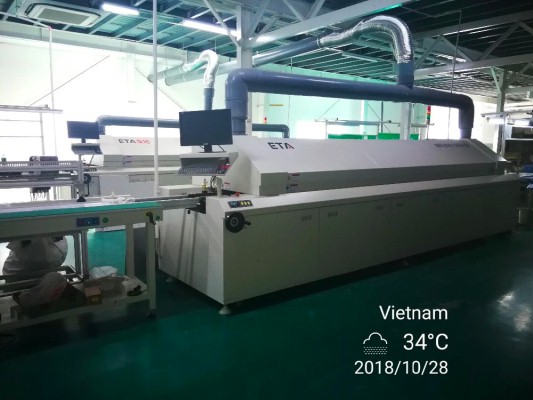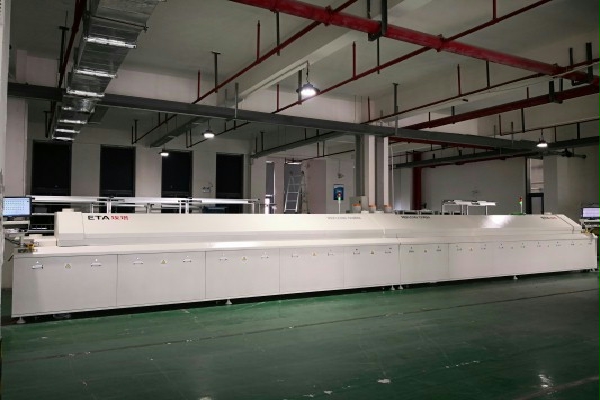Lead-free Reflow Soldering Machine
From: Author:Reflow Soldering Machine Publish time:2020-03-28 09:59 Clicks:54
Lead-free Reflow Soldering Machine
High-efficiency high end reflow oven, SMT reflow oven, reflow soldering machine, for SMT assembly line.

In the contemporary era of the development of electronic products, in order to pursue the smallest possible size and intensive assembly of plug-ins, double-sided PCBs have become quite popular, and more and more, designers are designing more compact, compact and low-cost products in In the lead-free reflow process, double-sided reflow has been gradually used.
In fact, most of the existing double-sided PCB boards are still soldered to the component surface by reflow oven and then soldered to the lead surface by wave soldering. This situation is the current double-sided reflow soldering. There are still some problems in the process that have not been resolved. The bottom component of the large board is easily dropped during the second reflow process, or the bottom solder joint is partially melted, causing solder joint reliability problems.

So, how should we achieve double-sided reflow soldering machine? The first is to use glue to stick the components on it. When it is turned over to enter the second reflow, the components will be fixed on it without falling down. This method is simple and practical, but requires additional equipment and operations. Steps to complete, naturally also increase costs. The second is the application of solder alloys with different melting points. The alloy with a higher melting point is used for the first side and the alloy with a lower melting point is used for the second side. The problem with this method is that the choice of the low melting point alloy may be affected by the final product. Due to the limited operating temperature, high melting point alloys will inevitably increase the temperature of reflow soldering, which will cause damage to components and the PCB itself.
For most components, the surface tension of the molten solder is sufficient to grasp the bottom part and form a highly reliable solder joint. The standard of 30g / in2 is usually used in the design. The third method is to blow cold air in the lower part of the furnace, so that the solder joint temperature at the bottom of the PCB can be maintained below the melting point in the second reflow soldering. Due to the temperature difference between the upper and lower surfaces, internal stress is generated. Effective methods and processes are needed to eliminate the stress and improve reliability.
❙ Reflow Soldering Machine Video

